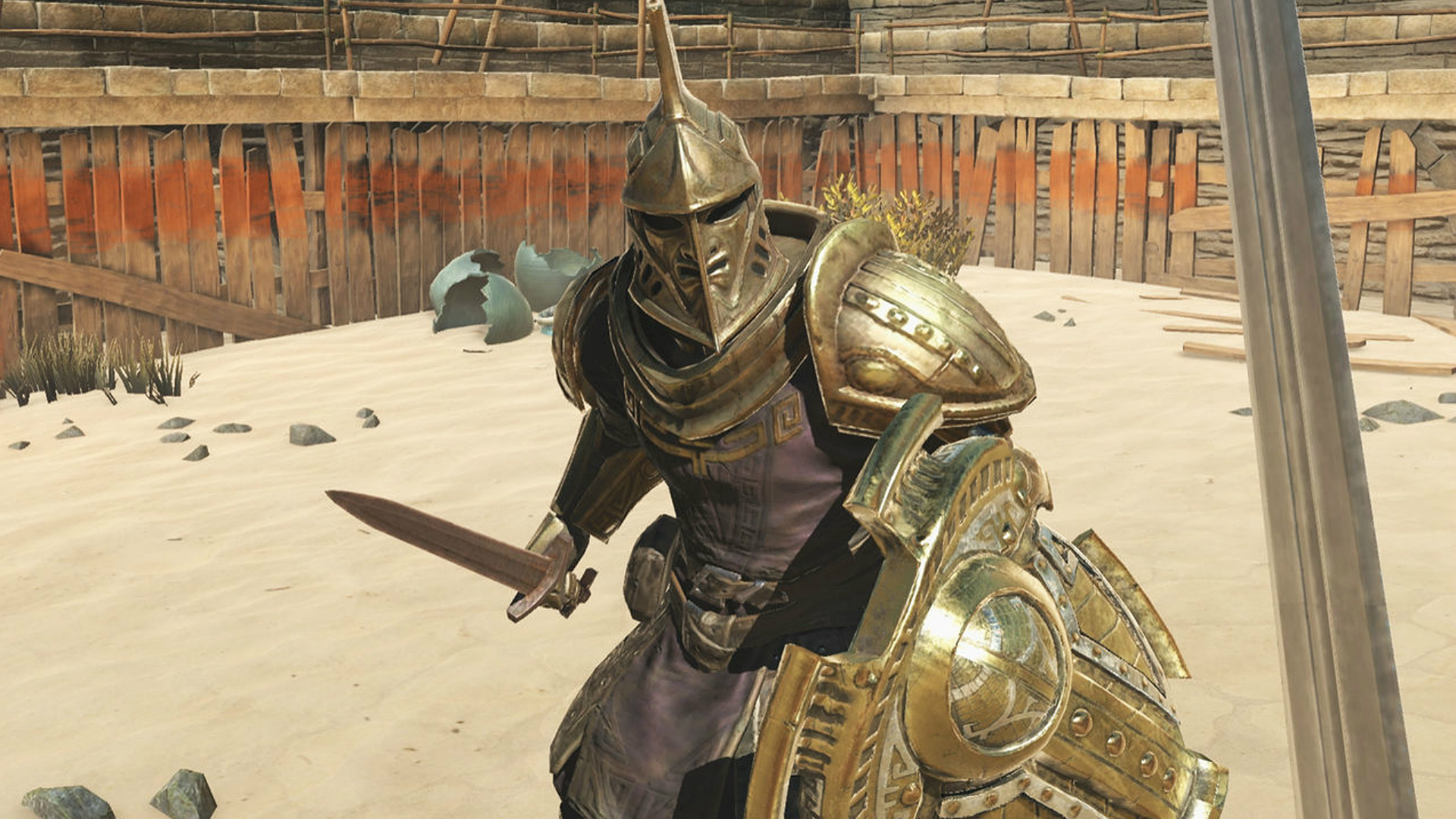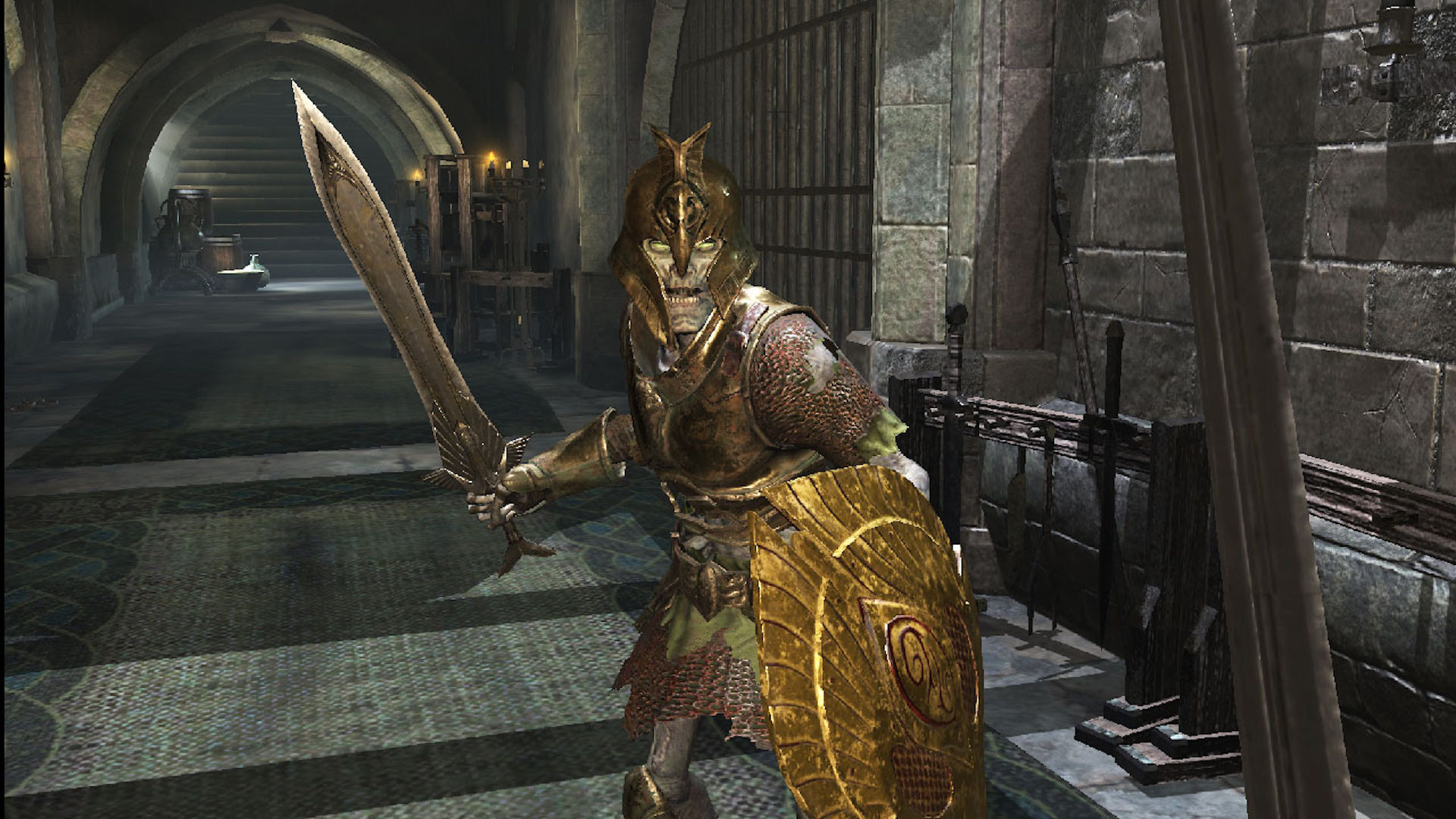
I went into The Elder Scrolls: Blades with my expectations firmly in check. Though it bears the “Elder Scrolls” moniker, this was obviously never meant to be a game that tries to offer a similar kind of experience as the likes of Skyrim or Morrowind. This was always meant to be a much lighter experience, and a free-to-play game, at that. And that’s exactly what I was expecting.
However, being a heavily toned-down version of a much grander series formula does not necessarily mean that a game can’t have any room for bright ideas or good design whatsoever. Just look at the likes of Super Mario Run or Pokemon Go, games that are designed to be mobile-centric versions of larger franchises, but still manage to be buttloads of bite-sized fun. Being truncated doesn’t excuse a game from bad design decisions and frustratingly repetitive design- and unfortunately, The Elder Scrolls: Blades is rife with both those things.
"Being truncated doesn’t excuse a game from bad design decisions and frustratingly repetitive design- and unfortunately, The Elder Scrolls: Blades is rife with both those things."
You play as a member of the titular Blades, a group of legendary soldiers and spies who return to their hometown, only to find it burned to the ground. This sets you on a path of finding out what exactly happened, and why that happened, while also rebuilding your homestead. It’s a serviceable setup, and the game, to its credit, does dabble in some of the series’ famously strong lore, but unfortunately, all it leads to is, simply put, a monotonous grind.
The actual rebuilding of your town can be somewhat satisfying. Contributing to its reconstruction and watching it grow again is the aspect of the game that probably works best (although best might be too strong of a word to use), not least because it feels like you’re making meaningful progress. How you get about rebuilding it, however, is where the repetitive nature of the game comes in.
You participate in events or head out on quests handed to you by NPCs to get resources, which you then use to rebuild your homestead, but every quest feels the same. There is no variety, no creativity. Every dungeon is extremely linear and small, and there is little to no interaction with the environments which means they all end up being little more than stage dressing, to the point that I don’t even see the purpose in letting us control our character’s movement rather than just taking us from battle to battle. Worst of all, the dungeons don’t even do a very good job as stage dressing though, because there’s very little visual variety here- it’s all just bland swathes of brown and grey.
"There is no variety, no creativity. Every dungeon is extremely linear and small, and there is little to no interaction with the environments which means they all end up being little more than stage dressing, to the point that I don’t even see the purpose in letting us control our character’s movement rather than just taking us from battle to battle."
The only real thing you’ve got to engage with, then, is the combat- and the combat is not much better. On a very superficial level, it works well enough- you attack with the trigger buttons and block by pushing up on the analog stick, while occasionally using magic attacks and other special attacks that are unlocked as you progress further.
After about half a dozen fights though, it’s all essentially the same. You can only ever fight one enemy at a time, and these one-on-one duels feel painfully limited in scope. It doesn’t help that the enemies themselves are, for the most part, mind-numbingly stupid. The combat in Blades, then, allows you to completely tune out- for a game that relies almost completely on combat for its more immediate player engagement, that’s not a good thing.
The best parts of any Elder Scrolls games are their open world settings, the complete freedom they offer to do whatever you want in their sandboxes, and the stories you make for yourself using their emergent systems. The worst parts of any Elder Scrolls games are their dungeons and their combat. Why Bethesda thought it would be a good idea to make an Elder Scrolls game that completely focuses on the latter and completely ignores the former is a question for the ages.
"The combat in Blades allows you to completely tune out- for a game that relies almost completely on combat for its more immediate player engagement, that’s not a good thing."
What’s worse is that Blades piles free-to-play grindy mechanics on top of an already repetitive and shallow game to make it an even more aggravating experience. Yes, this is a free-to-play games, so these things are to be expected- but it feels at times like Blades is designed around them. Every so often the game bombards you with ads for gems to be purchased with real money, or any number of other “deals” or “offers” to entice you into spending cash. Timers on things such as new buildings you place in your town or repairs that you might make encourage you to do the same.
Admittedly, these timers are far less offensive than they used to be when Blades launched in early access on mobile devices last year, but being slightly less annoying isn’t something they deserve plaudits for. It feels abundantly clear throughout the experience that it’s primary purpose is to wear you down with its ads and timers until you either spend money, or just drop the game for good. Given how repetitive and shallow the rest of the experience is, I suspect most people will do the latter.
The Arena mode, at least, is somewhat fun. It’s a PvP arena – as the name implies – and in the time I’ve spent with the game, I ran into almost no connectivity or matchmaking issues. Fighting against other players is inherently more enjoyable than fighting against enemies controlled by braindead AI, so if you do want to engage with the combat outside of the repetitive dungeons, I’d suggesting heading to the arena. There’s also a Abyss mode, where you face off against waves of enemies that grow progressively stronger until you die, and how long you last decides what rewards you get. It’s an interesting concept, and definitely more enjoyable than the boring quests, but given its total reliance on the shallow combat, it gets old fast.
"The Elder Scrolls: Blades was clearly never meant to be a full-fledged Elder Scrolls experience, and anyone expecting anything resembling something like that was always going to find it disappointing. However, even if you go in expecting a truncated mobile experience with pared back yet enjoyable mechanics, you’re still going to be disappointed."
The Elder Scrolls: Blades doesn’t even impress from a technical standpoint, which is surprising, given the game’s truncated nature. Character models look terrible, while textures in the environments look muddy and bland. These issues are somewhat easy to ignore in handheld mode, but on a bigger screen, it looks downright horrible. The game also suffers from glitches and frequent performance issues- that’s par for the course for an Elder Scrolls game, sure, but I just didn’t realize that that maxim would apply to a small mobile game as well.
The Elder Scrolls: Blades was clearly never meant to be a full-fledged Elder Scrolls experience, and anyone expecting anything resembling something like that was always going to find it disappointing. However, even if you go in expecting a truncated mobile experience with pared back yet enjoyable mechanics, you’re still going to be disappointed. This game uses its nature as a mobile-first title as a thin excuse for being a boring, mundane, monotonous experience. It may be free, so there’s no point asking if this is worth your money- but is it worth your time? Absolutely not.
This game was reviewed on the Nintendo Switch.
Rebuilding your town can be somewhat fun; The Arena can be enjoyable.
Shallow combat; Small, linear dungeons; Repetitive; Grindy free-to-play mechanics designed to make you spend money; Rough visuals; Technical issues and frame-rate drops.



















